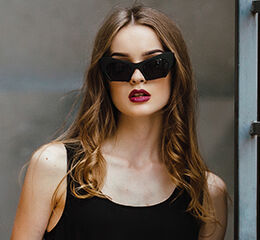Find the Best Foundation For You
10 Nov 2016
Colour may be identified by a name, number, letter, or any combination of the three. However, unlike the Pantone or Munsell systems used in the art and fashion industries, commercial cosmetic product names are not standardised. If a make-up artist requests a "Medium Beige" foundation, the result can vary drastically from brand to brand, and sometimes, within onebrand across different formulas. Cosmetic companies can also edit and adjust their formulations at any time, resulting in the 'Medium Beige' foundation a consumer has been wearing for years becoming a slightly different shade or color without prior notice.
50 Shades of Foundation
Many companies classify their shades as Warm, Neutral, or Cool. Adding to the confusion is the different color wheels used between the art and beauty industry. The traditional artist's palette places the line dividing Cool and Warm across Primary Blue, whereas the cosmetic palette places the line across Primary Red. Thus, on the artists’ color wheel, Yellow is always Cool, Red is always Warm, and Blue can be Neutral (Primary), Warm (Violet), or Cool (Green). In contrast, the cosmetic palette classifies Yellow as always Warm, Blue as always Cool, and Red as either Neutral (Primary), Warm (Orange) or Cool (Blue-Red).
The cosmetic palette is never used outside of make-up, and is very common in the industry — though a handful of professional lines, such as William Tuttle, Ben Nye, Visiora, M.A.C. and even Max Factor all use the conventional artist's palette. Thus, a Warm Beige foundation may either have a yellow tint or a pink tint, depending on the palette the company's creative director uses. Note that the artist's palette is designed to be used on canvas (which is white) compared to the make-up palette — which is used on flesh (an ivory to brown tone).
Prime, Prime, Primers!
A foundation primer may work like a moisturizer only different, or it may absorb oil with salicylic acid or aid in creating a less oily, more matte appearance.[1] It aids in applying the foundation more evenly and smoothly, and increases the longevity of the foundation. Some contain antioxidants such as A, C, and E, or other ingredients such as grape seed extract and green tea extract. There are water-based and silicon-based foundation primers.
Ingredients may include cyclomethicone and dimethicone. Some primers do not contain preservative, oil or fragrance. Some may also have sun protection factor (SPF). Some foundation primers are tinted to even out or improve skin tone or color. Others give a pearlized finish to make the complexion more light reflective. There are also foundation primers which are mineral-based primers, which contain mica and silica.
Don't Feel, Conceal!
A concealer or colour corrector is a type of cosmetic that is used to mask dark circles, age spots, large pores, and other small blemishes visible on the skin. It is similar to foundation, but thicker and used to hide different pigments by blending the imperfection into the surrounding skin tone. It is normally applied after primer, after foundation and used on the face.
Both concealer and foundation are typically used to make skin appear more uniform in color. These two types of cosmetics differ in that concealers tend to be more heavily pigmented, though they are available in a wide range of opacity. It also comes in different forms from liquid to solid. Also, foundation is usually applied to larger areas. The first commercially available concealer was Max Factor's Erace, launched in 1938. Concealer can be used alone or with foundations. Camouflage makeup is a much heavier pigmented form of concealer. It is used to cover serious skin discolorations such as birthmarks, scars and vitiligo. An example of a modern camouflage makeup is Colortration, which is a liquid cover makeup.
Concealer is available in a variety of shades, from lightest to deepest. When picking a concealer, people tend to choose one or two shades lighter than their skin tone to better hide their blemishes and dark circles under the eye. Some colors are intended to look like a natural skin tone, while others are meant to contrast with a particular type of blemish. Concealers with yellow undertones are used to hide dark circles. Green and blue can counteract red patches on the skin, such as those caused by pimples, broken veins, or rosacea. A purple-tinted concealer can make sallow complexions look brighter. Colored concealers such as these are usually applied sparingly beneath a concealer or foundation that matches the wearer's skin tone. Skin-toned concealers are not only the most common type, but are often sufficient on their own at hiding or blurring imperfections.









